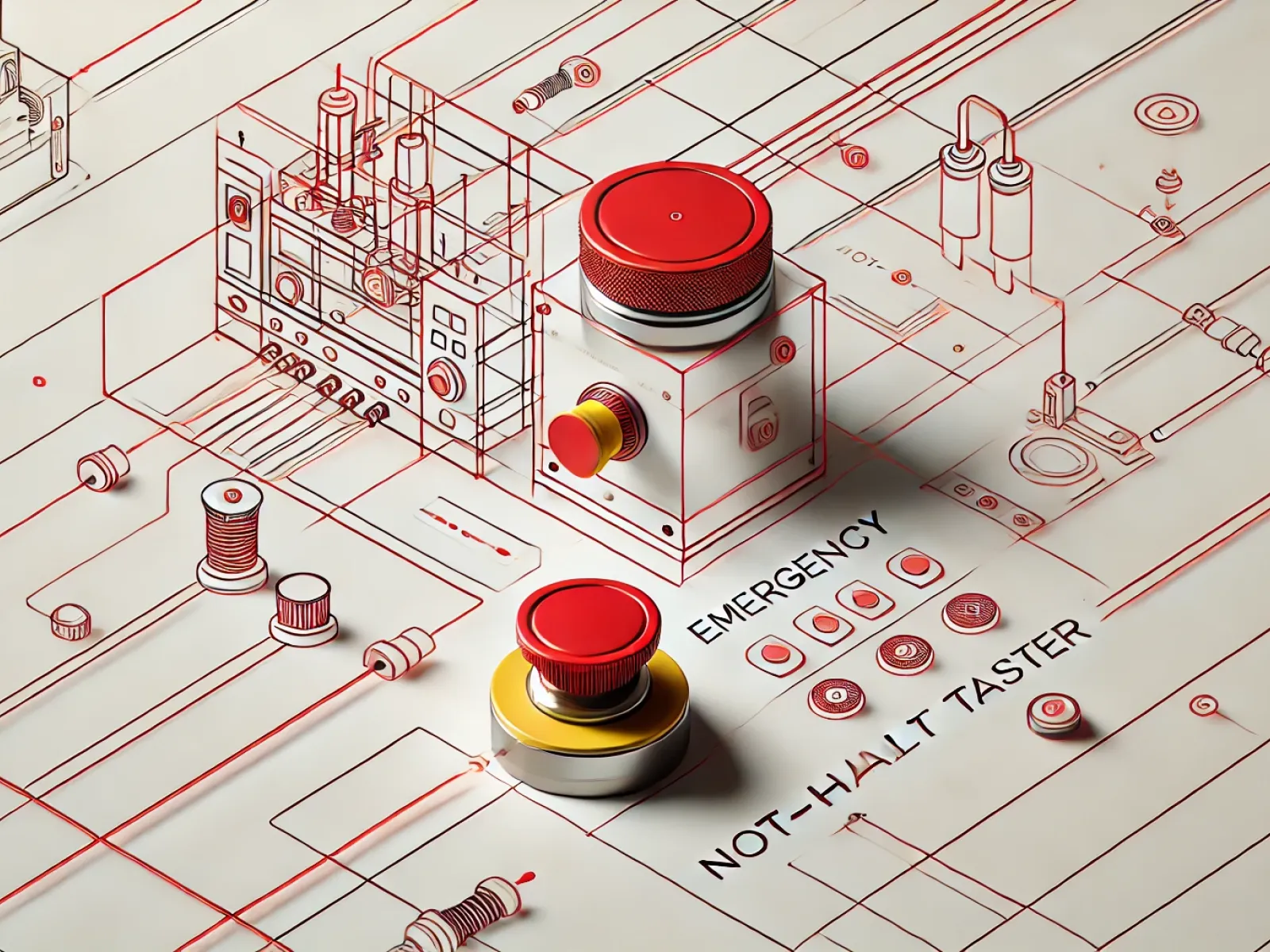- Identification of the necessary safety functions
- Determining the necessary performance level (PL) and/or safety integrity level (SIL)
- Support with creating a shutdown matrix/control concept
- Creating the safety requirements specification (SRS)
- Support with selecting/testing components
- Calculating (verifying) the safety functions
- Performing software validation (for B&R or Siemens PLC)
- Performing hardware validation
Functional safety in machine safety is based on the EN ISO 13849 and EN IEC 62061 standards and defines the requirements for failure probabilities and systematic suitability of safety-related systems of machines. The aim of these standards is to identify potential risks and minimize them by using appropriate safety functions.
The first step in ensuring functional safety is to identify the necessary safety functions as part of the risk analysis. This involves analyzing which functions must be implemented to ensure that the machine can be operated safely under all conditions. The risk analysis is carried out in accordance with the relevant standards and directives in order to cover all safety-related aspects.
The necessary Performance Level (PL) according to EN ISO 13849 or the Safety Integrity Level (SIL) according to EN IEC 62061 is then determined for the identified safety functions. These Performance Level required (PLr) or Safety Integrity Level determine the requirements with regard to random and systematic failures that must be achieved by the implemented safety functions. They serve as a guide for the development and implementation of the safety functions.
The Safety Requirements Specification (SRS) defines all safety-related requirements that must be met during the development process. This specification forms the basis for selecting the components required for implementing the safety functions.
The calculation and verification of the safety functions, using SISTEMA among other things, ensures that the implemented functions meet the specified safety requirements. Various analysis methods are used to mathematically confirm the reliability and effectiveness of the safety functions.
The final steps include software validation using SOFTEMA to ensure that all safety-related functions are programmed correctly.
This is followed by the hardware validation, which checks whether the intended safety-related functions meet the requirements of the SRS. Among other things, it is checked whether components have been correctly installed and whether the function itself and the necessary diagnostics are working properly to ensure their proper operation. In addition, it is checked whether all formal criteria, such as the presence of all relevant documents, are met.
Ensure the safety of your machines and systems – we support you in implementing your safety functions, from design to validation.
